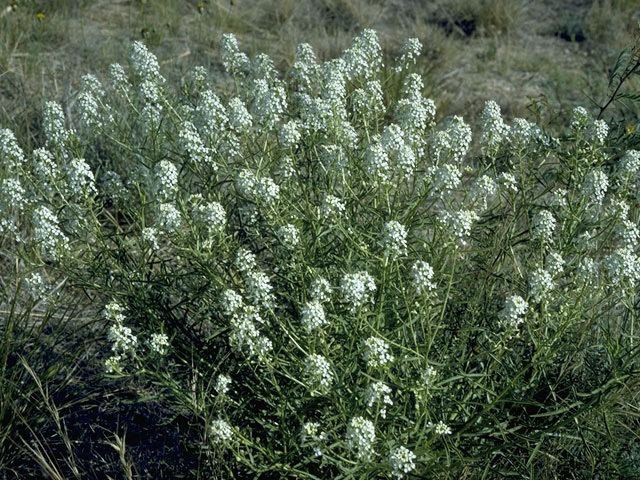 Image 1 of 2
Image 1 of 2

 Image 2 of 2
Image 2 of 2



Mountain Pepperwort
Lepidium montanum
(also known as Western Peppergrass, Mountain pepperweed, Mountain pepperplant)
zones 2-7
50 seeds
Pepperwort (Lepidium sp.) is a large genus of the mustard family that includes many species that frequently cross-pollinate with one another. Therefore you will likely see some variation in the plants yielded by your seed. All varieties are similar and edible. We list here the most common species of Pepperwort found in our region, which makes it our best guess at what our seeds will yield.
Pepperwort is a very common plant, frequently called a “weed”. It can be found growing in waste places, lawns, cracks in the sidewalk, disturbed land, etc. Since it is usually viewed as a weed, the safest way to enjoy its culinary flavors (without toxic pesticides) is by growing your own supply!
A bushy plant, growing to about 16” tall, all parts of the plant are edible and yield the familiar spicy bite of the mustard family. Fresh, young leaves from early in the season may be added to salads. Seeds may be gathered later in the season and used in any recipe calling for mustard seed. Roots may be harvested and used similar to horseradish. Pepperwort flowers in spring and early summer from April-July. Small white-to-yellowish flowers are borne on slender racemes.
Pepperwort should be sown early in spring in a moist, well-drained location. It is a biennial, meaning it will not produce seed until the second year.
Lepidium montanum
(also known as Western Peppergrass, Mountain pepperweed, Mountain pepperplant)
zones 2-7
50 seeds
Pepperwort (Lepidium sp.) is a large genus of the mustard family that includes many species that frequently cross-pollinate with one another. Therefore you will likely see some variation in the plants yielded by your seed. All varieties are similar and edible. We list here the most common species of Pepperwort found in our region, which makes it our best guess at what our seeds will yield.
Pepperwort is a very common plant, frequently called a “weed”. It can be found growing in waste places, lawns, cracks in the sidewalk, disturbed land, etc. Since it is usually viewed as a weed, the safest way to enjoy its culinary flavors (without toxic pesticides) is by growing your own supply!
A bushy plant, growing to about 16” tall, all parts of the plant are edible and yield the familiar spicy bite of the mustard family. Fresh, young leaves from early in the season may be added to salads. Seeds may be gathered later in the season and used in any recipe calling for mustard seed. Roots may be harvested and used similar to horseradish. Pepperwort flowers in spring and early summer from April-July. Small white-to-yellowish flowers are borne on slender racemes.
Pepperwort should be sown early in spring in a moist, well-drained location. It is a biennial, meaning it will not produce seed until the second year.